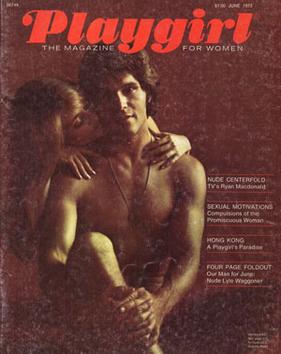
Playgirl was an American magazine that featured general interest articles, lifestyle and celebrity news, in addition to nude or semi-nude men. In the 1970s and 1980s, the magazine printed monthly and was marketed mainly to women, although it had a significant gay male readership.

Ms. is an American feminist magazine co-founded in 1971 by journalist and social/political activist Gloria Steinem. It was the first national American feminist magazine. The original editors were Letty Cottin Pogrebin, Mary Thom, Patricia Carbine, Joanne Edgar, Nina Finkelstein, Mary Peacock, Margaret Sloan-Hunter, and Gloria Steinem. Beginning as a one-off insert in New York magazine in 1971, the first stand-alone issue of Ms. appeared in January 1972, with funding from New York editor Clay Felker. It was intended to appeal to a wide audience and featured articles about a variety of issues related to women and feminism. From July 1972 until 1987, it was published on a monthly basis. It now publishes quarterly.

Ono no Komachi was a Japanese waka poet, one of the Rokkasen — the six best waka poets of the early Heian period. She was renowned for her unusual beauty, and Komachi is today a synonym for feminine beauty in Japan. She also counts among the Thirty-six Poetry Immortals.

Barbara Smith is an American lesbian feminist and socialist who has played a significant role in Black feminism in the United States. Since the early 1970s, she has been active as a scholar, activist, critic, lecturer, author, and publisher of Black feminist thought. She has also taught at numerous colleges and universities for 25 years. Smith's essays, reviews, articles, short stories and literary criticism have appeared in a range of publications, including The New York Times Book Review, The Black Scholar, Ms., Gay Community News, The Guardian, The Village Voice, Conditions and The Nation. She has a twin sister, Beverly Smith, who is also a lesbian feminist activist and writer.
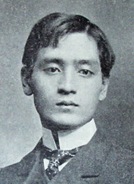
Yonejirō Noguchi was an influential Japanese writer of poetry, fiction, essays and literary criticism in both English and Japanese. He is known in the west as Yone Noguchi. He was the father of noted sculptor Isamu Noguchi.

LaLa is a monthly Japanese shōjo manga magazine published by Hakusensha on the 24th of each month. The magazine's bonus contents are usually calendars for New Year issues, drama CDs, and so on. In a 2006 survey conducted by Oricon, Japanese girls selected LaLa as their fifth favorite manga anthology, along with Shogakukan's Shōjo Comic and Kodansha's Weekly Shōnen Magazine.

Feminism in Japan began with women's rights movements that date back to antiquity. The movement started to gain momentum after Western thinking was brought into Japan during the Meiji Restoration in 1868. Japanese feminism differs from Western feminism in the sense that less emphasis is on individual autonomy.
The feminist sex wars, also known as the lesbian sex wars, or simply the sex wars or porn wars, are terms used to refer to collective debates amongst feminists regarding a number of issues broadly relating to sexuality and sexual activity. Differences of opinion on matters of sexuality deeply polarized the feminist movement, particularly leading feminist thinkers, in the late 1970s and early 1980s and continue to influence debate amongst feminists to this day.

Tatsuko Hoshino was a Japanese haiku poet active in Shōwa period Japan.

Bluestocking was a literary magazine created in 1911 by a group of five women: Haru Raichō Hiratsuka, Yasumochi Yoshiko, Mozume Kazuko, Kiuchi Teiko, and Nakano Hatsuko. The group called themselves the Japanese Bluestocking Society and used the magazine to promote the equal rights of women through literature and education. The magazine they developed was designed to articulate women’s self-awareness and the gender-based societal limitations they faced, but its promotion of early feminist beliefs through controversial publications caused it to be banned by the Japanese Home Ministry for being “disruptive to society.” Members of The Bluestockings were berated by the press, and their private lives were a source of outrage for the public. Bluestocking produced 52 issues with over 110 contributors. It is credited as an influence for modern Japanese feminism.

The Feminist Press is an American independent nonprofit literary publisher that promotes freedom of expression and social justice. It publishes writing by people who share an activist spirit and a belief in choice and equality. Founded in 1970 to challenge sexual stereotypes in books, schools and libraries, the press began by rescuing “lost” works by writers such as Zora Neale Hurston, Charlotte Perkins Gilman and Rebecca Harding Davis, and established its publishing program with books by American writers of diverse racial and class backgrounds. Since then it has also been bringing works from around the world to North American readers. The Feminist Press is the longest surviving women's publishing house in the world. The press operates out of the Graduate Center at the City University of New York (CUNY).
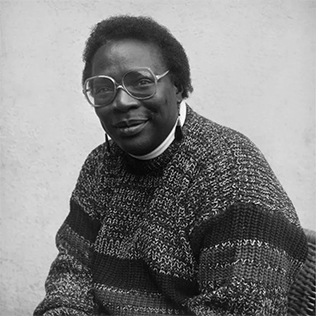
Pat Parker was an American poet and activist. Both her poetry and her activism drew from her experiences as an African-American lesbian feminist. Her poetry spoke about her tough childhood growing up in poverty, dealing with sexual assault, and the murder of a sister. At eighteen, Parker was in an abusive relationship and had a miscarriage after being pushed down a flight of stairs. After two divorces she came out as lesbian "embracing her sexuality" and said she was liberated and "knew no limits when it came to expressing the innermost parts of herself".
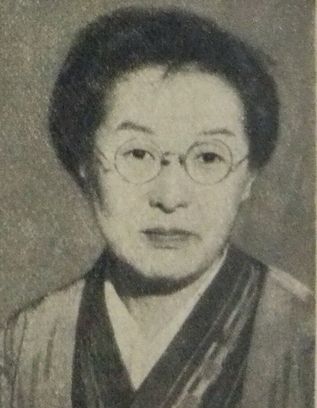
Ineko Sata, also Ineko Kubokawa, born Ine Sata, was a Japanese writer closely connected to the Proletarian Literature Movement. An advocate of women's rights, she has also repeatedly been linked to the feminist movement.
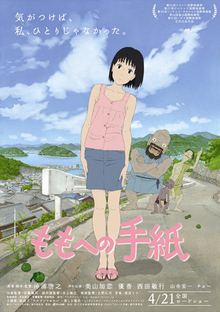
A Letter to Momo is a 2011 Japanese anime drama film produced by Production I.G and distributed by Kadokawa Pictures. The film was written and directed by Hiroyuki Okiura and stars an ensemble cast featuring Karen Miyama, Yuka, Toshiyuki Nishida, Chō and Kōichi Yamadera. In A Letter to Momo, 11-year-old Momo Miyaura moves with her mother to a small island town after her father dies. When she arrives, she encounters three goblins that others cannot see who help her to cope with the loss of her father and the changes in her life.

HERESIES: A Feminist Publication on Art and Politics was a feminist journal that was produced from 1977 to 1993 by the New York-based Heresies Collective.

Kodansha Ltd. is a Japanese privately-held publishing company headquartered in Bunkyō, Tokyo. Kodansha is the largest Japanese publishing company, and it produces the manga magazines Nakayoshi, Afternoon, Evening, Weekly Shōnen Magazine and Bessatsu Shōnen Magazine, as well as the more literary magazines Gunzō, Shūkan Gendai, and the Japanese dictionary Nihongo Daijiten. Kodansha was founded by Seiji Noma in 1910, and members of his family continue as its owners either directly or through the Noma Cultural Foundation.
Shufu no Tomo was a Japanese monthly women's magazine based in Tokyo, Japan. The magazine was in circulation between 1917 and 2008.
Rie Yoshiyuki was a Japanese writer of short stories, novels and poetry. She was awarded the Noma Children's Literature Newcomer Award, the Akutagawa Prize, and the Women's Literature Prize.















